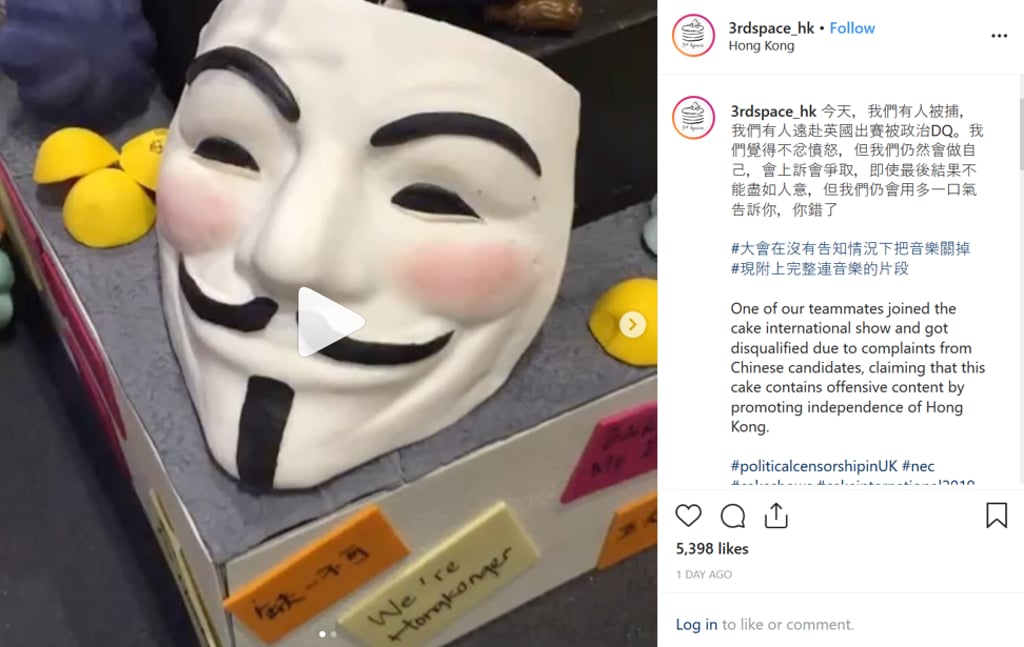Advertisement
Three bakeries making Hong Kong protest cakes like the one Cake International banned from competition
- Organisers ruled ‘offensive’ a cake whose icing had a Hong Kong protest theme at a contest in the UK, but similar cakes are flying off Hong Kong bakers’ shelves
- We talk to the creators of cakes such as Tear Gas Cloud and Liberate Hong Kong about the challenge of decorating them and how they chose their designs
Reading Time:4 minutes
Why you can trust SCMP

Creativity comes in many forms, and the anti-government protests in Hong Kong have inspired city bakers to make cakes with a message.
One even found its way to Cake International in Birmingham, Britain over the weekend, where it was disqualified from the confectionery competition because the entry’s content and message behind it “has been viewed as offensive and led to complaints from attendees”, according to an Instagram post quoting the organiser.
Here are some of the bakeries that have taken dessert decorating to another level – and what inspired their creations.
Advertisement
Amai Workshop
Known for its signature marble fondant cake, Amai Workshop’s bespoke cake designs have been wowing customers since 2015. Its protest themed cakes, however, have become bestsellers.
Advertisement
After launching the new cake series in September, shop owner Karu received dozens of orders. She isn’t afraid of criticism from the anti-protest camp.

Advertisement
Select Voice
Choose your listening speed
Get through articles 2x faster
1.25x
250 WPM
Slow
Average
Fast
1.25x